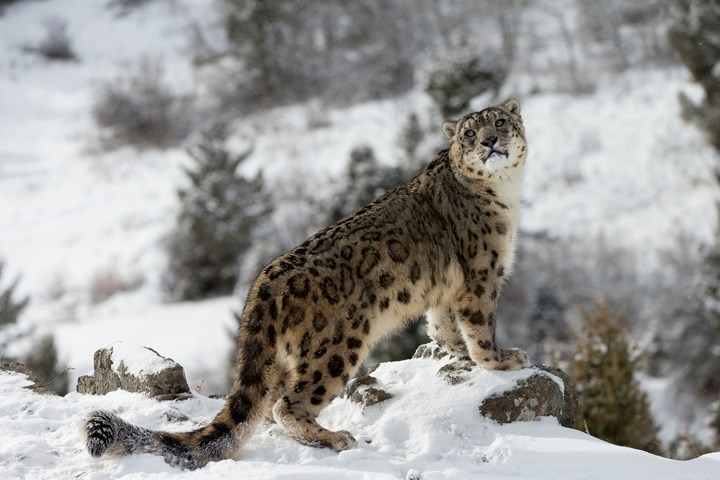Continuing with the theme introduced last week, it is not only species that evolve but whole ecosystems change over time. Ultimately, it is the interplay between environment and species which drives evolutionary change.
As an example, consider the snow leopard. This mammal is currently an endangered species, in part because its fur is considered valuable. But even without hunting the snow leopard is ideally adapted to one particular type of climate - snow.
Its camouflage is ideally suited to snowy woods and scrub brush in which the cat finds its prey. How adaptation happened is a matter of many generations of animals. A particular individual can't evolve. Rather, it is a species which does.
Other leopard species have yellowish-brown coats with spots or splotches of darker colour. The stippling allows them to blend into shady backgrounds and when standing still, they are difficult to detect. However, in a snowy environment, an ordinary leopard stands out against the backdrop.
But not all leopards have coats of the same yellowish-brown colour. Some are darker. Some are lighter. In a light coloured or snowy environment, leopards with a light coloured coat are likely to be more effective hunters. Their prey will not see them as readily.

The consequence, on an individual basis, is some animals will be better hunters than other. They will be better fed and better able to support a family. They will likely have more offspring and some of these offspring will have the gene for a lighter coloured coat.
This will mean the offspring will be more effective hunters, resulting in a higher likelihood of producing more offspring and so on. Eventually, lighter coloured coats will become the norm as animals with darker coloured coats will simply not be able to compete.
And as there will always be a range of colours for even the lighter coloured cats, the result will eventually lead to the snow leopard - an animal very well adapted to its environment.
Unfortunately for the snow leopard species, all of the thousands of years and multitude of generations which have slowly and steadily given rise to their adaptive transformation may have been for naught. As the climate changes, their snowy range is shrinking and their ability to blend in has decreased. Being a snow coloured leopard is no longer an evolutionary advantage.
Given time, the changes to the environment would result in animals with darker fur being more successful hunters and ultimately giving birth to the next generations of snow leopards. Over the course of several thousand years, the leopard would adapt. Or it could go extinct if it is not able to adapt as the environment changes rapidly.
This balance between the genome of a species and the environment in which it operates is a complex system. Every change in the environment puts demands on the species within it whether animal or plant. Some individuals die prematurely. Others are better adapted to the changing environment and thrive.
Future generations arise from the bloodlines of individuals more successful in the new environment.
However, all of this genetic change takes time. Biologists have been able to calculate how fast evolution happens but it is not easy and depends on a number of factors. Everything from the size of an animal to its reproductive capacity to the food it eats can influence how long it will take a species to evolve.
For the endangered snow leopard, evolutionary changes are not likely to happen soon enough. Changes in the environment pretty much ensure the species will go extinct within the coming century. The existing populations of snow leopard will not evolve fast enough.
This is true for any population. Changes in the abiotic world can have massive impact on all manner of living creatures. It was a catastrophic change - in the form of a collision with a large meteor - which is believed to have resulted in the mass extinction at the end of the Jurassic period and the loss of 75 per cent of the species on the planet, including dinosaurs.
But not all of the mass extinctions in the evolution of life on this planet can be attributed to a single cataclysmic event. Most have likely come about by changes generated by life itself.
Indeed, the single most important shift in animal speciation occurred with the development of photosynthesis and the production of oxygen from carbon dioxide. Prior to the first photosynthetic organisms the planet was dominated by archaea. The rise of cyanobacteria changed the very environment in which they lived as they changed the atmosphere and life evolved.
We would not be here today if this evolutionary path had not been followed.
Evolution is about the relationship between a species and the environment it lives in. As the environment changes, species either adapt or go extinct. For some species, such as the snow leopard, a warmer world will likely mean its demise.



